
Ladislaus the Posthumous was Duke of Austria and King of Hungary, Croatia and Bohemia. He was the posthumous son of Albert of Habsburg with Elizabeth of Luxembourg. Albert had bequeathed all his realms to his future son on his deathbed, but only the estates of Austria accepted his last will. Fearing an Ottoman invasion, the majority of the Hungarian lords and prelates offered the crown to Vladislaus III of Poland. The Hussite noblemen and towns of Bohemia did not acknowledge the hereditary right of Albert's descendants to the throne, but also did not elect a new king.

Matthias Corvinus, also called Matthias I, was King of Hungary and Croatia from 1458 to 1490. After conducting several military campaigns, he was elected King of Bohemia in 1469 and adopted the title Duke of Austria in 1487. He was the son of John Hunyadi, Regent of Hungary, who died in 1456. In 1457, Matthias was imprisoned along with his older brother, Ladislaus Hunyadi, on the orders of King Ladislaus the Posthumous. Ladislaus Hunyadi was executed, causing a rebellion that forced King Ladislaus to flee Hungary. After the King died unexpectedly, Matthias's uncle Michael Szilágyi persuaded the Estates to unanimously proclaim the 14-year-old Matthias as king on 24 January 1458. He began his rule under his uncle's guardianship, but he took effective control of government within two weeks.

John Hunyadi was a leading Hungarian military and political figure in Central and Southeastern Europe during the 15th century. According to most contemporary sources, he was the member of a noble family of Wallachian ancestry. He mastered his military skills on the southern borderlands of the Kingdom of Hungary that were exposed to Ottoman attacks. Appointed voivode of Transylvania and head of a number of southern counties, he assumed responsibility for the defense of the frontiers in 1441.

The King of Hungary was the ruling head of state of the Kingdom of Hungary from 1000 to 1918. The style of title "Apostolic King of Hungary" was endorsed by Pope Clement XIII in 1758 and used afterwards by all Monarchs of Hungary.

The House of Garay or Garai was a Hungarian-Croatian noble family, a branch of the Dorozsma (Durusma) clan, with notable members in the 14th and 15th centuries. They were lords of Csesznek.

John Corvinus was the illegitimate son of Matthias Corvinus, King of Hungary, and his mistress, Barbara Edelpöck.

Nicholas II Garai was a powerful Hungarian baron who served as the Palatine of Hungary from 1402 until 1433 and the ban of Macsó, Usora, Só, Slavonia, Croatia and Dalmatia. He also ruled over the Braničevo, Syrmia, Bačka, Banat and Baranya regions through vassals. Together with his close ally Stibor of Stiboricz, he remained one of the richest and most powerful nobles in Hungary for over 30 years. Nicholas II Garai also served as de facto ruler of Hungary next to King Sigismund. In 1416 Sigismund extended their armorial bearings showing the Order of the Dragon and the Order of the Scarf. He presented the patent to his brother-in-law.
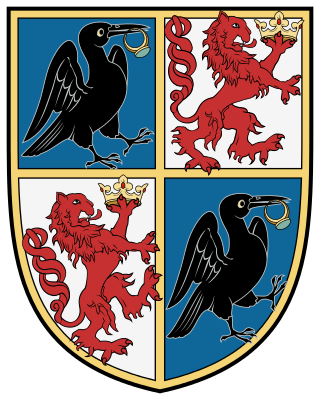
The Hunyadi family was one of the most powerful noble families in the Kingdom of Hungary during the 15th century. A member of the family, Matthias Corvinus, was King of Hungary from 1458 until 1490, King of Bohemia from 1469 until 1490, and Duke of Austria from 1487 until 1490. His illegitimate son, John Corvinus, ruled the Duchy of Troppau from 1485 until 1501, and five further Silesian duchies, including Bytom, Głubczyce, Loslau, Racibórz, and Tost, from 1485 until 1490. The Hunyadi coat-of-arms depicted a raven with a golden ring in its beak.

Vladislaus II, also known as Vladislav, Władysław or Wladislas, was King of Bohemia from 1471 to 1516 and King of Hungary and of Croatia from 1490 to 1516. As the eldest son of Casimir IV Jagiellon, he was expected to inherit Poland and Lithuania. George of Poděbrady, the Hussite ruler of Bohemia, offered to make Vladislaus his heir in 1468. George needed Casimir's support against the rebellious Catholic noblemen and their ally, Matthias Corvinus, King of Hungary. The Diet of Bohemia elected Vladislaus king after George's death, but he could rule only Bohemia proper because Matthias, whom the Catholic nobles had elected king, occupied Moravia, Silesia and both Lusatias. Vladislaus tried to reconquer the four provinces with his father's assistance but was repelled by Matthias.
The Újlaki family, in old sources de Illoch, de Wylak, de Voilack etc., Hungarian: Újlaki) was a Croatian–Hungarian noble family, descended in the male line from Gug, a member of the lower nobility in the region of Lower Slavonia during the 13th century.
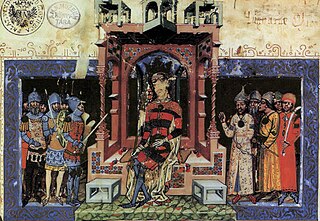
Nicholas Kont of Orahovica was a Croato-Hungarian nobleman, very powerful and influential in the royal court of king Louis the Angevin, serving as Count palatine. He was the forefather and founder of the Iločki noble family.

Lawrence of Ilok was a Croatian-Hungarian nobleman, a member of the Iločki noble family, very wealthy and powerful in the Kingdom of Hungary-Croatia. He held the title "Voivode (Duke) of Ilok" and Voivode of Bosnia, and was during his life Ban of Macsó (1477–1492), Ban of Belgrade (1511–1513), member of the Royal Chamber Council and judge royal (1517–1524).

Michael Szilágyi de Horogszeg was a Hungarian general who was Regent of Hungary, Count of Beszterce and Head of Szilágyi–Hunyadi Liga.
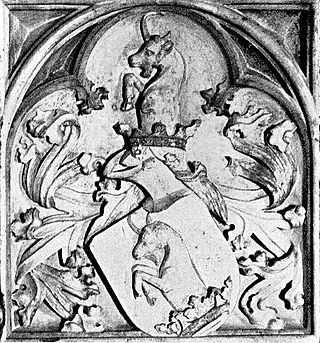
The Szilágyi of Horogszeg was an important Hungarian noble family of the Kingdom of Hungary and of Transylvania.
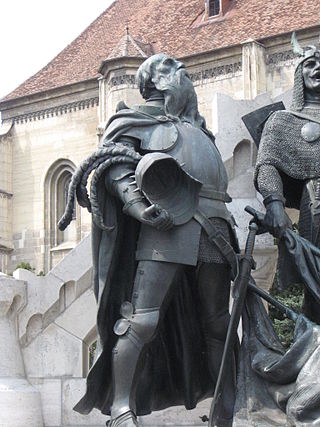
Blaise Magyar, also Blaž the Magyar, was a military commander and officer of state in the Kingdom of Hungary in the 15th century. His military career started under the command of John Hunyadi. In the reign of John Hunyadi's son, Matthias Corvinus, he served as Ban of Croatia from 1470 to 1472 and in 1483, Ban of Slavonia from 1470 and 1471 and in 1483, Ban of Bosnia from 1470 to 1471, and Voivode of Transylvania from 1472 and 1475. He died in Kassa in 1490.

The Battle of Una was fought on 29 and 30 October 1483 between the regional Ottoman forces, mostly from the Sanjak of Bosnia, and the Kingdom of Croatia near Brod Zrinski at the Una River crossing and was one of the first major Croatian victories against the Ottoman Empire. The Croatian army was led by the Ban of Croatia Matthias Geréb and several members of the House of Frankopan, joined by other Croatian nobles and the Despot of Serbia, Vuk Grgurević. Their goal was to intercept the Ottomans that were moving towards the Una River. In the battle that lasted for 2 days the Ottomans were defeated and soon a 7-year truce was signed with Sultan Bayezid II.

Szilágyi – Hunyadi League was a movement led by Michael Szilágyi and his sister Erzsébet Szilágyi, created with the objective of putting Matthias Corvinus on the throne of the Kingdom of Hungary.
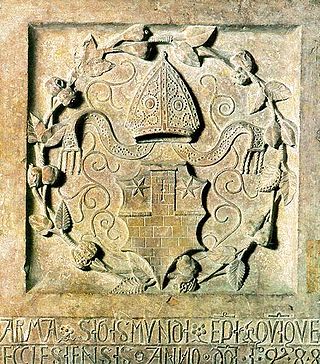
Sigismund Ernuszt was Bishop of Pécs in the Kingdom of Hungary from 1473 to 1505. Ernuszt was also Ban of Croatia, Dalmatia and Slavonia from 1494 to 1498. He was the son of John Ernuszt, a converted Jew, who started his career as a custom's duty collector during the reign of Matthias Corvinus, King of Hungary. Sigismund studied at the universities of Vienna and Ferrara in the early 1470s. When the king made him bishop of Pécs, the Holy See confirmed him as the administrator of the diocese, but he was most probably never ordained bishop. Matthias Corvinus also tasked him with the administration of the newly conquered Archduchy of Austria in 1486.
Stephen (I) Erdélyi de Somkerék was a Hungarian nobleman, who served as Vice-voivode of Transylvania from 1462 to 1465, and for a short time in 1476. He participated in the Transylvanian rebellion against King Matthias Corvinus in 1467.
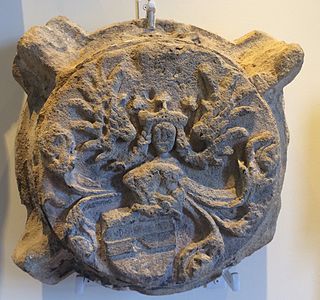
Ladislaus of Ilok was a Croato–Hungarian nobleman, a member of the Iločki noble family. He held the dignity of Ban of Macsó (Mačva), as well as župan of Baranya, Bodrog, Srijem, Vukovar and Tolna in the associated kingdoms Hungary and Croatia.

















